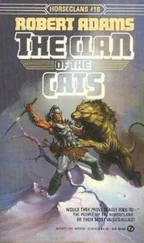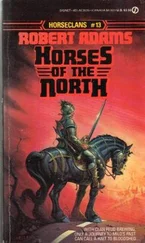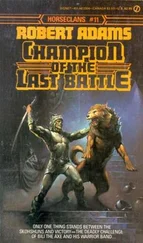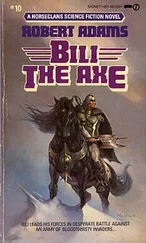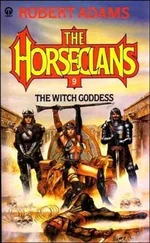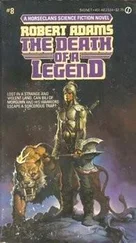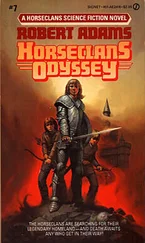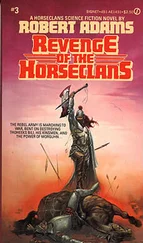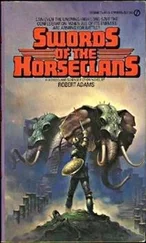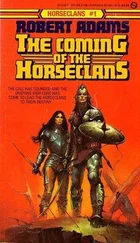Robert Adams - A Woman of the Horseclans
Здесь есть возможность читать онлайн «Robert Adams - A Woman of the Horseclans» весь текст электронной книги совершенно бесплатно (целиком полную версию без сокращений). В некоторых случаях можно слушать аудио, скачать через торрент в формате fb2 и присутствует краткое содержание. Жанр: Фантастика и фэнтези, на английском языке. Описание произведения, (предисловие) а так же отзывы посетителей доступны на портале библиотеки ЛибКат.
- Название:A Woman of the Horseclans
- Автор:
- Жанр:
- Год:неизвестен
- ISBN:нет данных
- Рейтинг книги:4 / 5. Голосов: 1
-
Избранное:Добавить в избранное
- Отзывы:
-
Ваша оценка:
- 80
- 1
- 2
- 3
- 4
- 5
A Woman of the Horseclans: краткое содержание, описание и аннотация
Предлагаем к чтению аннотацию, описание, краткое содержание или предисловие (зависит от того, что написал сам автор книги «A Woman of the Horseclans»). Если вы не нашли необходимую информацию о книге — напишите в комментариях, мы постараемся отыскать её.
A Woman of the Horseclans — читать онлайн бесплатно полную книгу (весь текст) целиком
Ниже представлен текст книги, разбитый по страницам. Система сохранения места последней прочитанной страницы, позволяет с удобством читать онлайн бесплатно книгу «A Woman of the Horseclans», без необходимости каждый раз заново искать на чём Вы остановились. Поставьте закладку, и сможете в любой момент перейти на страницу, на которой закончили чтение.
Интервал:
Закладка:
Most often, two clans camped and moved on together, and occasionally there were three, very rarely four or more. Every five or six years, as many as twenty-five or thirty clans, they having been notified of time and location by traders or the traveling bards, would gather in conclave for as long as a week but no more, for so many folk and animals in one place quickly exhausted the supportive capabilities of even the richest area.
Unless visited by natural disaster or by heavy war or hunting losses, the average clan numbered twenty to twenty-five male warriors, fifty to sixty clanswomen-archers (both maiden-archers and matron-archers) and as many as a dozen prairiecats of fighting age. Children, both male and female. over the age of thirteen summers were counted among the warriors or the archers and were considered to be of marriageable age at fourteen, for all that few males wed before eighteen or twenty.
A chief might have three or even four wives, plus a slave concubine or two, but the average clansman had no more than one wife at a time and was considered well-to-do if he could support a second wife or a concubine.
Horseclansfolk loved children and produced as many as possible, for their life was unremittingly hard and they well knew that half or fewer of their children would survive to an age to sire or bear another generation. All of the children born into a clan were born free, no matter the status of their mothers at their birthings; moreover, all grew up as equals, save only that no son of a concubine could become chief of his birth clan unless his mother first was freed and formally adopted into that clan.
Compared to other times and peoples, the lives of the Horseclansfolk were harsh in the extreme, from birth to death. Perhaps one of each ten babes born into a Kindred clan would survive long enough to see the birth of a grandchild, but it had been ever so. since the time of the Sacred Ancestors; and simply because only the very toughest—physically, mentally, emotionally—ever lived long enough to themselves breed, Horseclansfolk were born with a great tolerance for adversity and privation. To outsiders, the image of the Kindred was of a grim, stoic, humorless, savagely fearsome people; but among themselves, they were anything but products of this mold, being warm-natured, merry, frequently quite emotional.
Of course, outsiders—Dirtmen and traders—never saw the Horseclansfolk at unguarded moments. All that the most of the Dirtmen ever saw was armed warriors, screeching warcries and killing, or driving off stock, burning buildings and crops.
But in a safe camp, Kindred seldom went about armed with anything more lethal than an eating knife, or perhaps an especially prized small weapon worn principally as an ornament. Herders carried riatas of braided rawhide, bolas, bows and arrows, and double-pointed lances (a dull point at one end for prodding cattle, a sharp point at the other). Hunters also carried bows and arrows, bolas, riatas, and usually broadbladed spears rather than lances. Too, they carried longdirks or hangers, hatchets and an assortment of knives for skinning and butchering, they might also carry a sling and stones for it.
Warriors, on the other hand, were never considered properly accoutered for war or raids without their body armor of leather boiled in wax—all lacquered and decorated with insets of brass and gold and silver—their helmet of the same material or, sometimes, steel, their heavy, cursive saber, and their target of laminated woods and leather. These, along with the double-edged war dirk and an assortment of knives and daggers, plus of course the cased bow and the quivers of war arrows, constituted the basic panoply of the Kindred warrior.
Other weapons were optional and purely of personal choice—light axes, lances, spears, javelins or darts, clubs, staffslings, bolas, even the humble riata and stockwhip.
On the morning of a late-spring day, two Kindred clans were on the march, Clans Dohluhn and Krooguh were now less than a full day’s traveling time from the rendezvous area of which the bards and traders had been telling for more than three years.
Out ahead and on the flanks of the wide-spreading body moved prairiecats and a few young stallions, their keen senses spying out any possible danger or promise of game and mindspeaking their findings back to the jagged line of maiden-archers—all riding with bows stung and an arrow nocked, two more shafts held ready between the fingers of the bow hand—who trailed the foremost cats at distances of a quarter to a half mile.
The chiefs and most of the warriors came next, riding in a line as jagged as the maiden-archers, usually, in clumps of two to four men. They rode fully armed—helmets, armor, targets, bows, sabers and dirks, with lances. spears, light axes, a handful of darts or whatever. But for all their warlike, well-prepared appearance, they rode relaxed, bantering and joking, secure in their knowledge that they would be well warned of any impending danger.
Behind the warriors, formed in a rough extenuated crescent, came the king stallion and his herd. Then the high-wheeled carts and the wagons trundled along, the former drawn by teams of mules or horses, the latter by lowing spans of oxen. The matrons rode beside the draft animals directing the horses and mules by rein or mindspeak, the oxen by judicious use of ox prod or stockwhip.
Poles and hides and felt strips and the lathing frameworks of tents and yurts, the meager furnishings—carpets, brass lamps, folding tables, chests and the like—spare clothing, bedding, weapons, and personal possessions, nonperishable foodstocks, bales of hides and furs, tools, everything, were packed into or onto the wagons and the carts or onto the loads of pack beasts. Atop the laden wagons and carts rode the very aged, the few ill or infirm, and those children assigned to watch over the prairiecat kittens and cubs tethered here and there to the cargo. (Kittens and cubs not only tired quickly and overheated easily, but were cursed with a distressing and virtually inborn tendency to stray.)
To the rear were the herds—cattle, sheep, a few goats—all herded by a few superannuated warriors and a horde of mounted boys and girls still too young to commence their serious war training. A bit behind the herds, eating dust, rode a widespread rearguard of maiden-archers and a few prairiecats.
Beside one of the chief wagons of Clan Krooguh, the first and principal wife of the chief in all save name ambled along astride a smooth-gaited piebald mare. Having passed her ox prod to her husband’s second wife—Anee Makaiuh of Krooguh—and unlaced the front of her shirt, Behtiloo Hansuhn of Krooguh had lifted her winter-born boychild from the cradle rack affixed to the cantle of her saddle and given him her bright-red left nipple.
On this day, Behtiloo had been Tim’s wife and a clanswoman for almost fifteen years, and none save her adoptive kinfolk would have or could have suspected from her appearance, bearing, behavior or demeanor that she was anything save Horseclans-born and -bred. Indeed, Behtiloo herself often experienced some difficulty in recalling how things had been when she was not a Krooguh.
Her exposed skin surfaces were now every bit as weather-darkened as were her husband’s, her long, golden hair was done into thick braids and lapped over her crown to bear the weight of her helmet, and she was attired like any other man or woman of the Kindred—the loose, baggy shirt and trousers of richly embroidered homespun, calf-length boots of felt with leather soles and wood—and-leather heels, broad leathern waistbelt supporting a pouch and a couple of knives, with a frog for attachment of the dirk.
Chief Dik Krooguh was so feeble this spring that he could not sit a horse but had to ride in a specially fitted cart, and most people opined that he would never see another spring. But then they had been so opining for more that fifteen years, and he had outlived many a one of the opiners. True, his health had not been good since the first day Behtiloo had seen him, but he had managed to survive all of his wives and concubines, his sister, Lainuh, and all other close kin save Tim, his heir. He had lived longer than any of his old cronies, save only Djahn Staiklee, who upon the demise of his wife, Lainuh, had wed a young, pretty blond woman, Mairee Daioh, when Dahnah had made it clear to him that she would rather remain a concubine than become a Horseclans wife.
Читать дальшеИнтервал:
Закладка:
Похожие книги на «A Woman of the Horseclans»
Представляем Вашему вниманию похожие книги на «A Woman of the Horseclans» списком для выбора. Мы отобрали схожую по названию и смыслу литературу в надежде предоставить читателям больше вариантов отыскать новые, интересные, ещё непрочитанные произведения.
Обсуждение, отзывы о книге «A Woman of the Horseclans» и просто собственные мнения читателей. Оставьте ваши комментарии, напишите, что Вы думаете о произведении, его смысле или главных героях. Укажите что конкретно понравилось, а что нет, и почему Вы так считаете.

